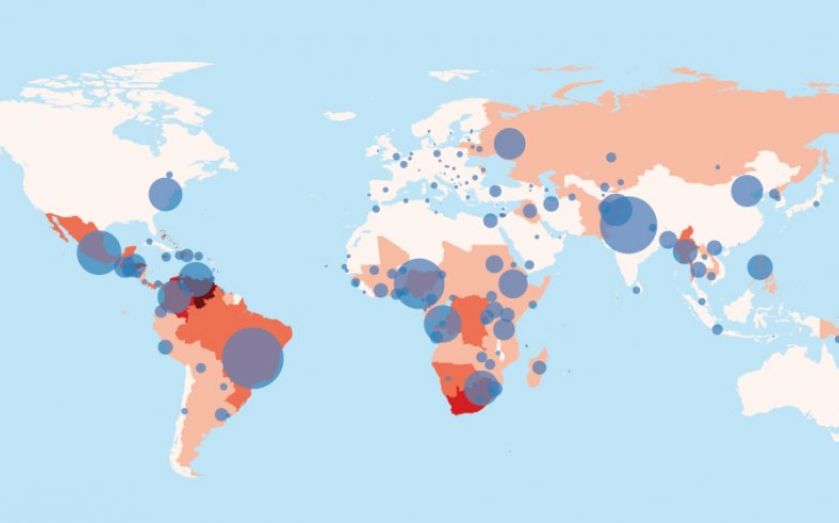Sofia and Maria Jose Alvarado killings: How Honduras is the murder capital of the world


All data is from the United Nations Office on Drugs and Crime. Figures are from 2012, or the most recent avialible year prior to 2012.
The murder of Maria Jose Alvarado teenage beauty queen has shocked Honduras, despite the country having the highest homicide rate in the world.
Maria Jose Alvarado and her sister Sofia were apparently killed after Sofia’s boyfriend became jealous of her dancing with another man. The pair were shot and buried by a river.
These aren’t isolated incidents: the murder rate in Honduras is horrific, especially for women.
The homicide rate in the UK was around one person per 100,000 per year in 2012 (United Nations Office on Drugs and Crime date), which is relatively low. The United States, a far more violent country, had a rate of 4.7 homicides per 100,000, while Mexico, famed for its drugs gangs and violence had a rate of 21.5 and South Africa, nation of rolling slums and gated communities patrolled by private security, had a rate of 31.
Honduras? 91 people, per 100,000, per year.
Here is a map of the homicide rates across the world. The colours of the different nations represent the homicide rate, while the bubbles represent the total number of homicides per person.
Here is a closer look at the top ten. Note the famously dangerous nations: Honduras, South Africa, Democratic Republic of Congo.

Many of the countries on the most dangerous list are on this map, in South and Central America:

Here are the safest 20. The countries on the list tend to be developed democracies, with some exceptions, such as Saudi Arabia. Note also: state executions are not included, which is probably why China and Saudi Arabia make the list. The UK is joint 10th.

Honduras is a country where the word homicide belies the fact that women are frequently the victims. According to an article in The Guardian, less than two per cent of murder cases involving women were investigated in 2012.
The article quotes Jacky Repila of Oxfam-backed project Raising Her Voice as saying that murders of women increased 160 per cent between 2003 and 2007, while the number of men killed increased by 50 per cent.
So what do homicide rates mean? In his book The Better Angles of Our Nature, cognitive scientist Steven Pinker says that at a rate of round 45, life would be noticeably dangerous, while towards 100 (like in Honduras) you are likely to lose a friend or family member about once a decade.
Homicide rates tend to stop dropping at around one as Pinker explains:
“Even the gentlest society will have the occasional young man who gets carried away away in a barroom brawl or an old woman who puts arsenic in her husband’s tea, so that (one) is about as low as homicide rates ever go.”
High rates of social violence often decrease, Pinker notes, when the state is able to act on the behalf of wronged persons, nullifying one of the main drivers of violence: the human urge to gain vengeance.
Other causes of violence are deterrence and honour, causes that can be combatted by credible deterrence (likelihood of being caught) and by a trusted justice system.
Any one of these motives or issues could have contributed to the murder of Maria Jose and Sofia Alvarado.
Areas where citizen feel the government does not have power or does not represent them can have vastly higher homicide rates than other areas of a given city, as in areas of Baltimore in the US.